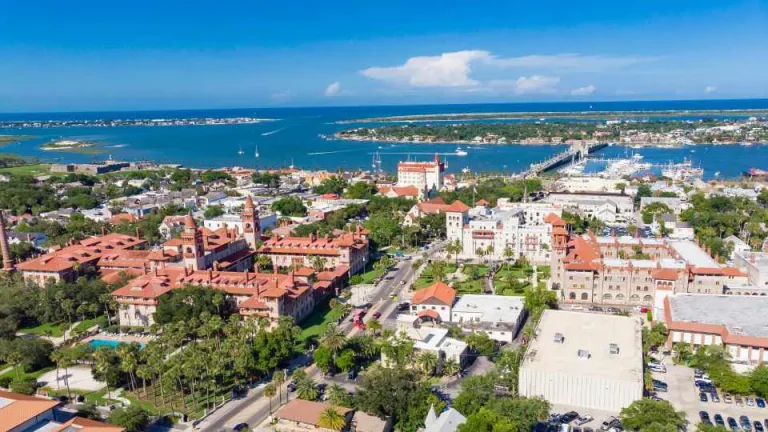Stay Fit on Vacation: Essential Tips for Traveling Workouts
Vacation is a time to relax and recharge, yet staying fit shouldn’t be sidelined. Individuals can maintain their wellness levels by integrating efficient travel workouts into their itineraries, ensuring physical activity remains part of their daily routine. Portable exercise equipment and bodyweight routines are perfect for continuing workouts without disrupting travel plans.
Incorporating brief, intense workouts can keep fitness levels high even while on the move. High-intensity exercises like burpees or stair runs can be adjusted to suit any location, allowing travelers to stay active no matter where they are. Hydration, too, is a crucial component of maintaining fitness, particularly during extended travel.
The benefits of working out while traveling extend beyond physical health. Exercise can improve mood, increase energy levels, and enhance overall travel experiences. With careful planning, fitness enthusiasts can find gyms or designated workout spaces at their destinations to ensure their health objectives stay on track.
Planning Your Fitness Strategy
To stay fit on vacation, thoughtful planning is key. This includes setting achievable fitness goals, blending workouts seamlessly into your travel plans, and ensuring you pack the right gear to support your exercise routine while away from home.
Setting Realistic Fitness Goals
Establishing realistic fitness goals is crucial. Vacation goals might focus on maintaining current fitness levels rather than making significant gains. They should account for potential constraints like time, space, and equipment availability.
Examples of goals include committing to at least 15 minutes of exercise daily or aiming to walk 10,000 steps. Adapting workouts according to the travel itinerary ensures goals are achievable, keeping motivation high and stress low.
Incorporating Exercise Into Your Travel Itinerary
Integrating exercise into travel plans requires creativity and flexibility. Consider starting the day with a quick workout in a hotel room or using transit time for physical activity such as walking between sights. This approach helps balance fitness with exploration.
Some travelers schedule activities like hiking, biking tours, or local fitness classes to blend workouts seamlessly with sightseeing. Often, this not only keeps fitness on track but also enriches the travel experience.
Packing Essentials for Fitness on the Go
Packing the right fitness essentials is vital. Items like resistance bands, a jump rope, or a compact yoga mat can provide versatile workout options anywhere. These tools are light and pack easily, making them perfect for travel.
It’s also wise to include appropriate workout attire, like moisture-wicking clothing that dries quickly. For those considering high-energy activities, verifying that travel insurance covers fitness-related injuries can offer peace of mind. Preparation ensures that workouts remain uninterrupted and enjoyable.

Adapting Workouts for Travel
To stay fit while traveling, it’s essential to adapt routine exercises to fit various environments, whether indoors or outdoors. Making creative use of hotel facilities and integrating local adventures can provide great fitness opportunities without needing a full gym setup.
Bodyweight Exercises for Anywhere Workouts
Bodyweight exercises offer flexibility and effectiveness without requiring special equipment. Push-ups and squats provide a full-body workout that builds strength and endurance. Hip bridges are excellent for targeting core muscles and can easily be performed on any flat surface, such as a hotel room floor.
Bodyweight routines benefit travelers by allowing exercise in confined spaces. These exercises are adaptable to personal fitness levels. Adding variations, like plyometric movements, can increase intensity, making workouts more challenging.
Using Hotel Amenities to Your Advantage
Hotel amenities can be a valuable asset for maintaining fitness on the road. Many accommodations offer a gym equipped with basic machines and free weights, providing an opportunity for a well-rounded workout. Even without a gym, hotel furnishings can be repurposed for training.
A sturdy chair or bed can be used for dips or elevated push-ups. Using towels for resistance stretches or stability exercises demonstrates creative use of available resources. Adjusting routines to what’s accessible maximizes workout efficiency in unconventional settings.
Outdoor Activities and Explorations as Exercise
Engaging in outdoor activities offers a refreshing alternative to indoor workouts and supports local exploration. Hiking local trails not only provides excellent cardiovascular exercise but also allows travelers to immerse themselves in the natural surroundings.
Walking tours can also increase daily step count while exploring urban environments. Incorporating cycling or jogging into a travel itinerary enables maintaining fitness and experiencing the locale from a unique perspective. It integrates exercise seamlessly into leisurely activities, ensuring physical activity remains a priority while traveling.
Nutrition and Hydration on the Road
Traveling often disrupts routine eating habits and hydration practices. It is important to maintain a balanced diet, stay adequately hydrated, and consider techniques like intermittent fasting to manage nutrition effectively during trips.
Eating Healthy While Traveling
Travel can make it challenging to stick to a healthy diet, but planning is key. Packing nutritious snacks like nuts, seeds, and dried fruits ensures healthy options are always at hand. Seeking local restaurants that offer fresh, whole food options enhances the travel experience while maintaining nutrition standards.
When dining out, look for grilled, baked, or steamed dishes to avoid excessive oils and fats. Asking for dressings and sauces on the side can further help control calorie intake and make healthier choices possible.
Staying Hydrated and Its Importance
Hydration is particularly crucial while traveling, as busy schedules and air travel can quickly lead to dehydration. Carrying a reusable water bottle is an effective way to ensure constant access to water. This practice not only supports the environment but also serves as a physical reminder to drink regularly.
Air travel can deplete hydration levels due to the low humidity inside aircraft cabins. Aim to drink one cup of water per hour when flying. Instead of caffeine and alcohol, which contribute to dehydration, choose herbal teas or infused water to maintain fluid balance.
Intermittent Fasting and Travel
Intermittent fasting can align well with travel by offering a flexible eating schedule. Skipping meals strategically during travel can help manage time zones, reduce jet lag, and maintain energy levels. It also enables one to focus on quality over quantity when eating.
This method might help minimize the temptation of frequent snacking or indulging in unhealthy options available at airports. Starting with a simple fasting schedule, such as 16 hours fasted and 8 hours eating window, can provide a structured approach to nutrition without feeling restrictive.

Types of Travel Workouts
Engaging in effective travel workouts can keep fitness levels intact even when away from a traditional gym setting. Whether focusing on building strength or enhancing flexibility, there’s a suitable workout for every traveler.
High-Intensity Interval Training (HIIT)
HIIT workouts are ideal for travelers who have limited time but seek maximum impact. These workouts typically involve short bursts of intense exercise followed by brief rest periods, enhancing cardiovascular health and burning calories efficiently. Exercises might include jump squats, burpees, or mountain climbers. A typical HIIT session could be structured into 30-second intervals with 10 seconds of rest. This format requires minimal space and no equipment, making it practical for hotel rooms or outdoor spaces.
Strength Training On the Go
For those focused on maintaining or building muscle, strength training with minimal equipment is a great option. Bodyweight exercises such as push-ups, squats, and lunges provide a full-body workout, while resistance bands can add extra challenge. Using luggage or water bottles as weights adds variety to the routine. Emphasizing high reps with short rest periods ensures a comprehensive workout even when traditional facilities are unavailable.
Cardio Workouts for Energy and Endurance
Cardio workouts can be seamlessly integrated into a travel schedule to boost energy and endurance. Options include brisk walking, jogging, or cycling, which can be done outdoors or on a treadmill. Engaging in these activities not only keeps the heart healthy but also allows travelers to explore new destinations on foot. For those short on time, hotel stairs provide an excellent opportunity for a quick cardio session.
Yoga and Flexibility Routines
Yoga is perfect for travelers seeking relaxation and improved flexibility. Practicing even 10 minutes of yoga daily can reduce stress and enhance mobility. Poses like downward dog, warrior II, and tree pose require minimal space. There are numerous online resources offering guided sessions specifically designed for travel. These routines can be done in hotel rooms or outdoor environments, requiring only a yoga mat or towel.
Complementary Fitness Strategies
Staying fit on vacation isn’t just about traditional workouts; it involves effective recovery techniques, incorporating active recovery days, and emphasizing mental wellness. These strategies can help maintain cardiovascular and metabolic conditioning while supporting strength-training goals.
Recovery Techniques for Traveling Athletes
For travelers prioritizing fitness, efficient recovery is essential to maintain performance. Adequate hydration keeps muscles and joints well-lubricated. Stretching or yoga can alleviate tightness accumulated from long flights or continuous travel.
Massage tools like foam rollers can help alleviate muscle soreness and improve blood circulation. Sleep is crucial, optimizing rest periods to expedite recovery and support metabolic conditioning. Prioritizing a balanced diet with sufficient protein and carbohydrates aids muscle repair and replenishment of energy stores.
Incorporating Active Recovery Days
Active recovery days should blend light exercise with leisurely activities. Consider low-impact activities like walking or swimming to promote cardiovascular fitness without overexerting. These activities maintain flexibility and reduce muscle stiffness while keeping up with strength-training routines.
A brief session of stretching or Pilates can be effective on these days. It allows travelers to remain active and freshens up the body’s metabolic processes. Engaging in local activities such as hiking provides a unique way to explore new areas while contributing to fitness goals.
Mental Wellness and Exercise
Mental wellness plays a pivotal role in maintaining an effective fitness routine while traveling. Exercise serves as a stress-reliever, improving mood and mental resilience. Mindfulness practices, such as meditation, pair well with physical activities to enhance overall well-being.
Regular physical activity contributes to better sleep quality, which is especially crucial amid the disruptions of travel. Integrating short sessions of aerobic exercise, like jogging or jumping jacks, can boost cardiovascular health while energizing the mind.
Techniques like focused breathing or guided visualization can improve the mental state and benefit physical performance. This dual emphasis on mental and physical wellness ensures a well-rounded approach to fitness, even on the go.






